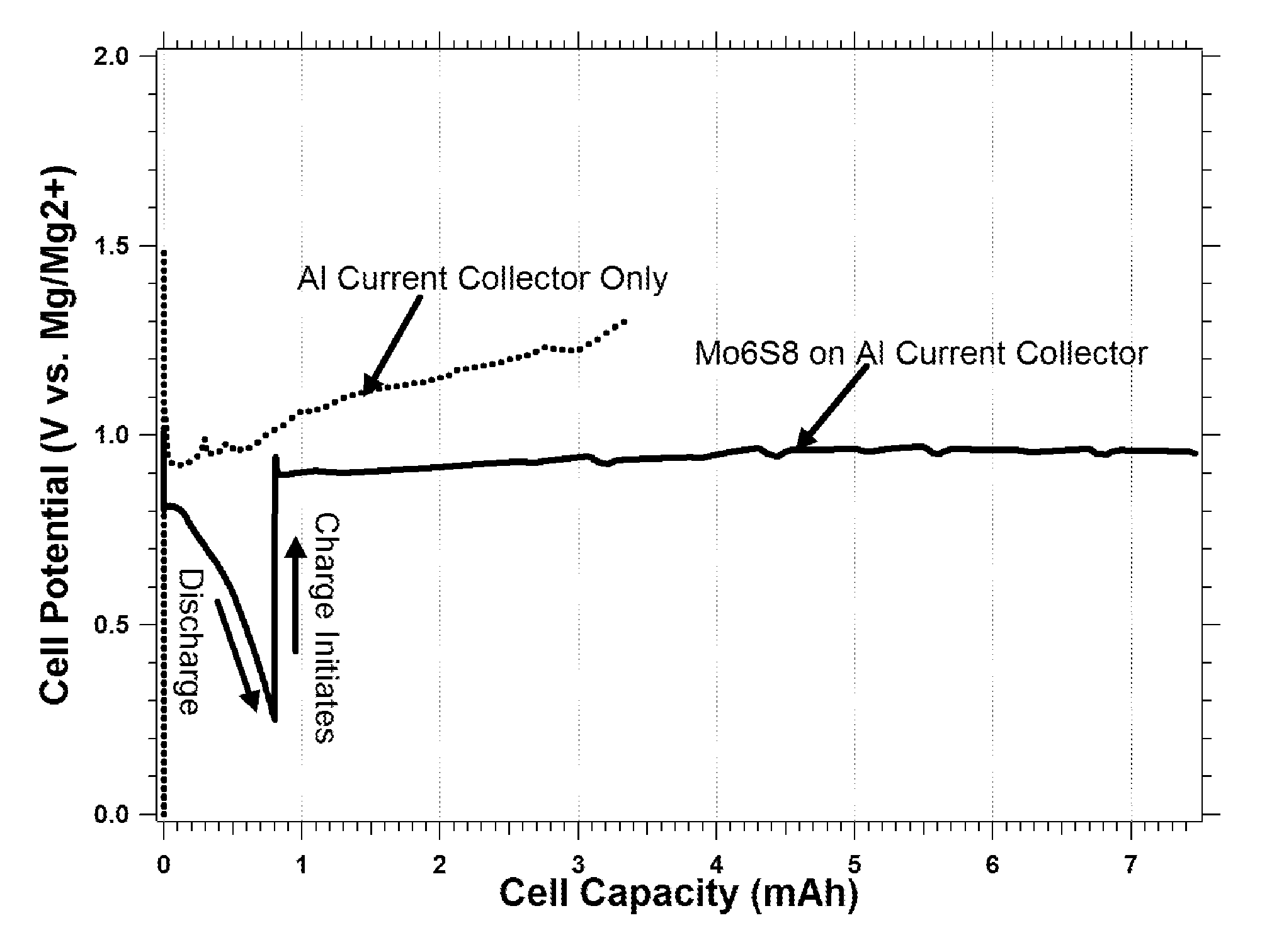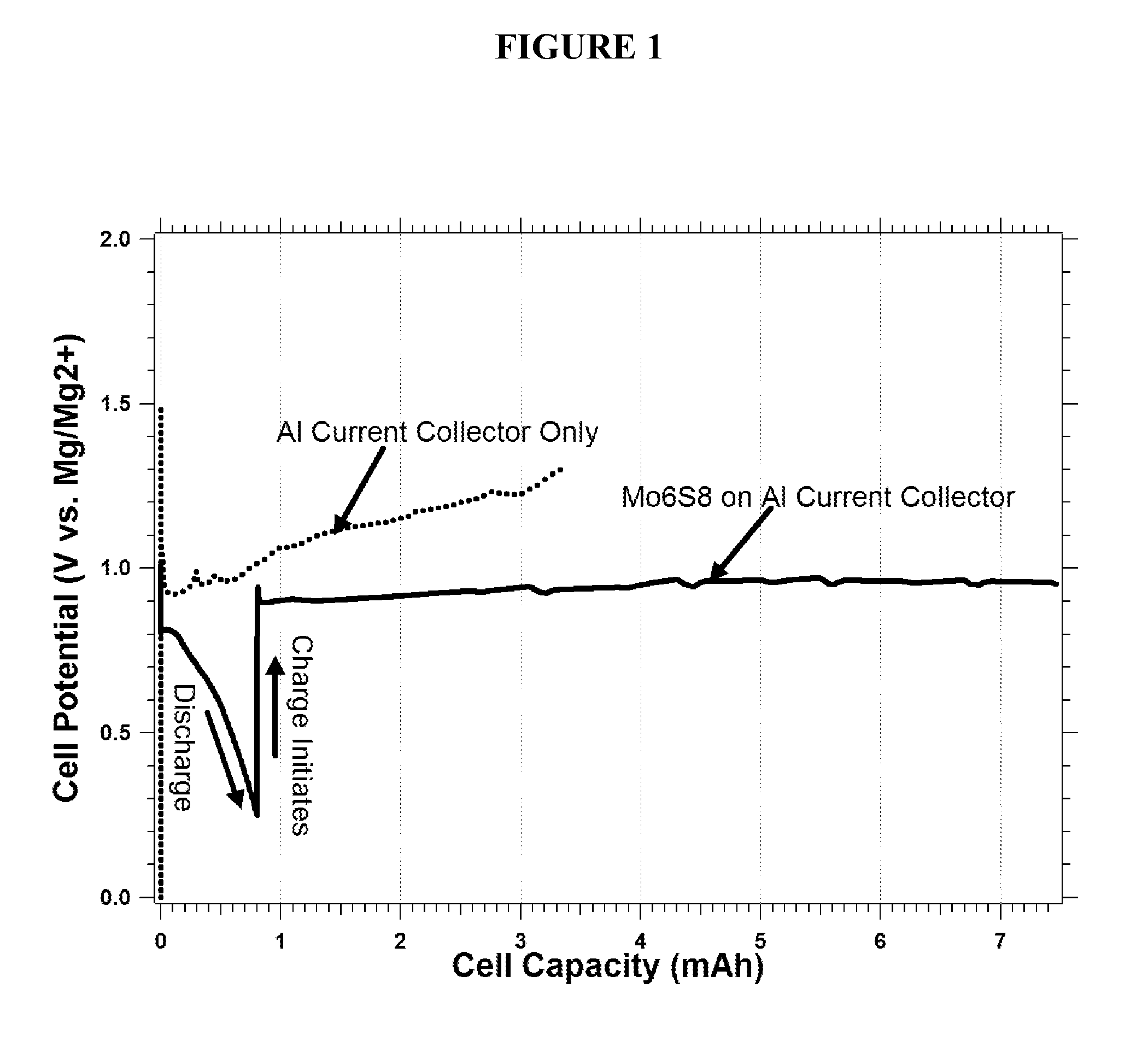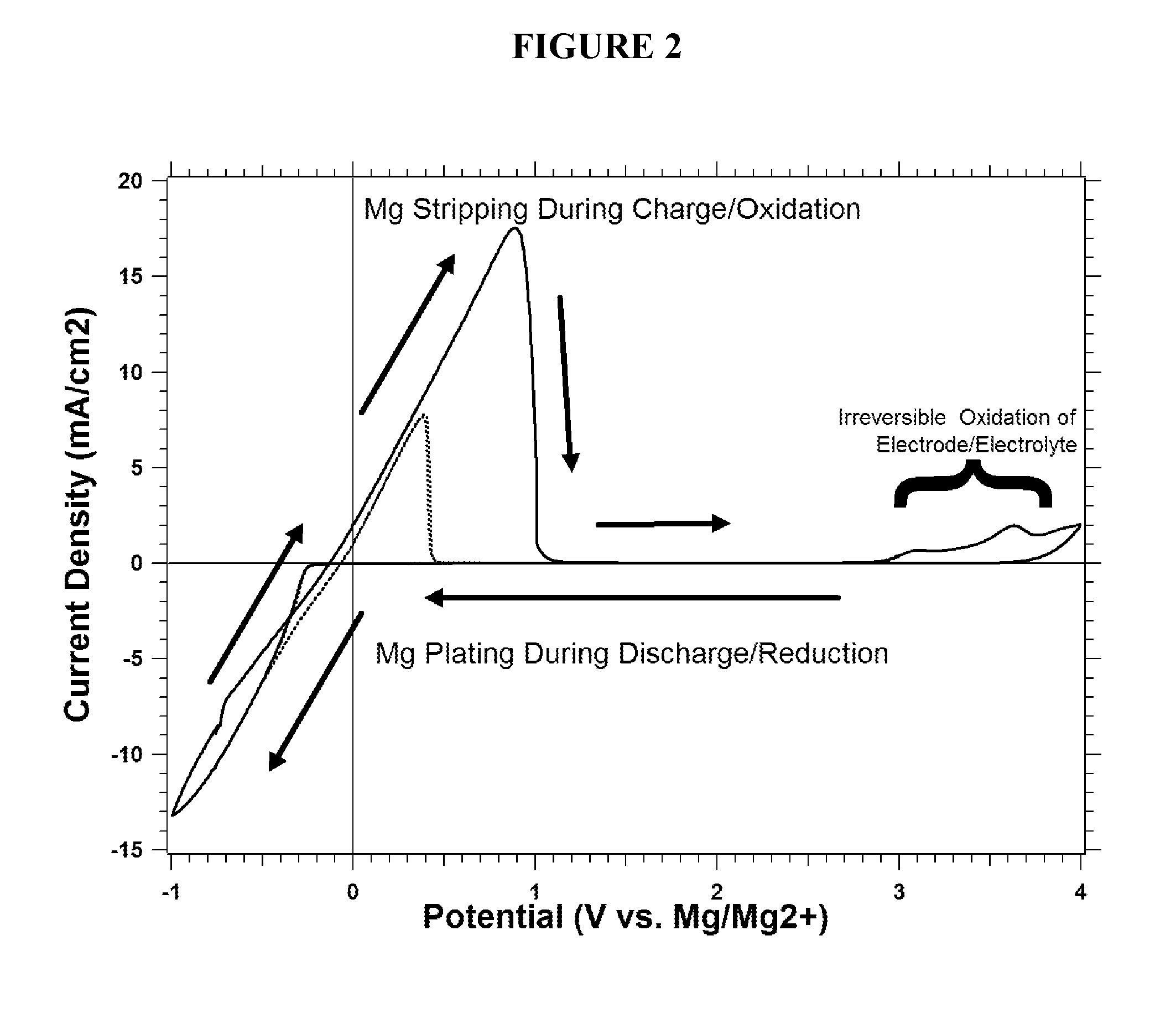Rechargeable magnesium ion cell components and assembly
a magnesium ion cell and rechargeable technology, applied in the field of current collectors, can solve the problems of too expensive pt current collectors to use in commercially viable mg ion cells, and achieve the effect of cost-effective fabrication
- Summary
- Abstract
- Description
- Claims
- Application Information
AI Technical Summary
Benefits of technology
Problems solved by technology
Method used
Image
Examples
Embodiment Construction
[0036]Current collectors including carbonaceous material for magnesium batteries are disclosed herein.
[0037]Aluminum (Al) is a commonly used material for the cathode current collector in today's Li-ion batteries, while Copper (Cu) is a commonly used anode current collector. It is well established by the work of K. Kanamura [J. Power Sources, Vol. 81-82, pp. 123-129, 1999] and Morita et al. [Electrochimica Acta, Vol. 47, pp. 2787-2793, 2002] that during the first several charge and discharge cycles of a Li-ion battery there is a significant amount electrolyte decomposition that occurs due to so-called “parasitic” reactions, that stabilize the current collector surfaces for long-term cycling. The decomposition products passivate the current collectors and electrode materials with protective films composed of inert species to prevent electron tunneling (e.g., further reaction) while enabling Li-ion migration (e.g., insertion / removal of Li from LiCoO2). For example parasitic reactions r...
PUM
| Property | Measurement | Unit |
|---|---|---|
| voltage | aaaaa | aaaaa |
| open-circuit voltage | aaaaa | aaaaa |
| open-circuit voltage | aaaaa | aaaaa |
Abstract
Description
Claims
Application Information
 Login to View More
Login to View More - R&D
- Intellectual Property
- Life Sciences
- Materials
- Tech Scout
- Unparalleled Data Quality
- Higher Quality Content
- 60% Fewer Hallucinations
Browse by: Latest US Patents, China's latest patents, Technical Efficacy Thesaurus, Application Domain, Technology Topic, Popular Technical Reports.
© 2025 PatSnap. All rights reserved.Legal|Privacy policy|Modern Slavery Act Transparency Statement|Sitemap|About US| Contact US: help@patsnap.com



